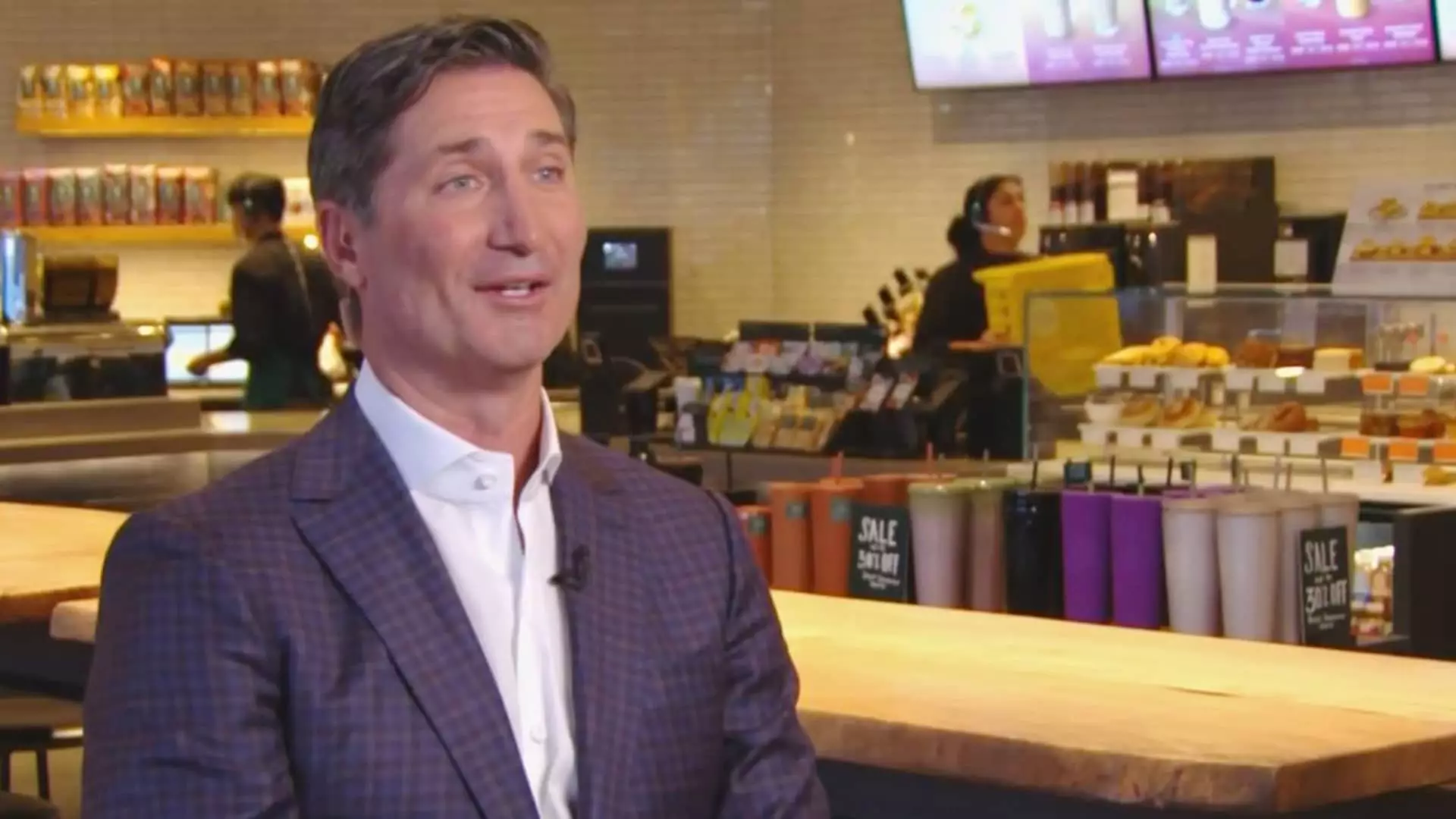Starbucks finds itself at a pivotal juncture, grappling with a continued decline in sales across the previous three quarters. In an earnest attempt to navigate through this turbulence, CEO Brian Niccol has unveiled a multifaceted plan designed to revitalize the coffee giant’s operations, enhance customer experience, and reestablish its signature ambiance across locations. As scrutiny intensifies, the company’s hopes hinge not only on operational refinements but also on the cultivation of a more welcoming environment that reiterates its commitment to quality service.
At the heart of Niccol’s turnaround strategy lies a simple yet ambitious goal: to serve a customized drink to every customer in under four minutes. Currently, only about half of the transactions meet this target, indicating a significant area for improvement. With mobile orders now constituting over 30% of business, Starbucks faces the daunting challenge of balancing speed and personalization. To address this, Niccol emphasized the need for better timing accuracy within the Starbucks app, which will ensure customers are informed of when their beverages are ready for pickup. Moreover, he aims to streamline mobile orders by refining customization options, thereby affording baristas a better chance to deliver consistent quality.
Niccol’s assessment of the company’s current menu underscores another dimension of his strategy. He advocates for a reduction in offerings, shifting towards a “fewer, better” mantra that prioritizes quality over quantity. By simplifying the menu, baristas can improve their execution efficiency, potentially enhancing service speed. This approach is based on the understanding that an overly complex menu often leads to slower service and inconsistent execution.
As part of the aim to recapture its identity as a “third place”—a welcoming space where customers can work and socialize outside of their homes—Starbucks is also initiating a redesign of its stores. Critics have noted a departure from the brand’s original ethos; therefore, Niccol is determined to return that warmth and comfort to the Starbucks experience. This includes reintroducing ceramic mugs for in-house patrons and replacing the printed labels that have taken over the artisanal touch of handwritten name tags.
Furthermore, Niccol acknowledges the consequences of shifting towards pickup-only stores that lack traditional seating. He advocates for design changes that will cultivate a community atmosphere, even in locations primarily designed for grab-and-go service. Such adjustments will not only support a welcoming environment but also reflect a commitment to the traditional coffeehouse experience.
Operational efficiency plays a vital role in any service-oriented business, and Starbucks is no exception. Niccol has taken strides to enhance barista scheduling, ensuring that staff are appropriately allocated during peak and off-peak hours. This attention to scheduling can significantly impact turnover rates and employee retention, resulting in a well-staffed environment ready to serve customers efficiently.
The relaunch of condiment bars signifies another operational tweak aimed at alleviating pressure on baristas and improving customer satisfaction. By reintroducing these self-service stations, Starbucks will not only expedite the drink customization process but also empower customers to tailor their beverages according to personal preferences without burdensome delays.
Marketing strategy is also undergoing a comprehensive shift under Niccol’s watch. The previous focus primarily targeted Starbucks Rewards members, but Niccol aims to broaden the appeal of marketing initiatives to encompass a wider audience, spotlighting the quality of Starbucks coffee. This reset will coincide with a reduction in discount-driven promotions, which often detract from the brand’s premium image while overloading baristas—something Niccol personally aims to correct.
Niccol’s extensive marketing background, originating from Procter & Gamble and later progressed through successes at Taco Bell and Chipotle, is expected to enhance Starbucks’ brand management. His vision includes a renewed emphasis on clarity and quality in communication, seeking to endear the brand to both loyal patrons and potential new customers.
In a move indicative of listening to customer feedback, Starbucks plans to eliminate the extra charges for milk substitutes effective November 7. This change accommodates a growing demand for such alternatives without penalizing the customer financially. With broader intentions of maintaining price stability throughout the next fiscal year, Starbucks is set on reshaping its pricing perception among consumers, hoping to re-engage occasional visitors who have been deterred by rising costs in recent years.
As Starbucks navigates through challenging waters, its multifaceted approach—an emphasis on service speed, a comforting physical ambiance, and refined marketing strategies—illustrates a concerted effort to rejuvenate its brand. With these initiatives in place, the coffee company hopes to not only reverse its sales decline but also reinforce its position as a cornerstone of community and quality.

